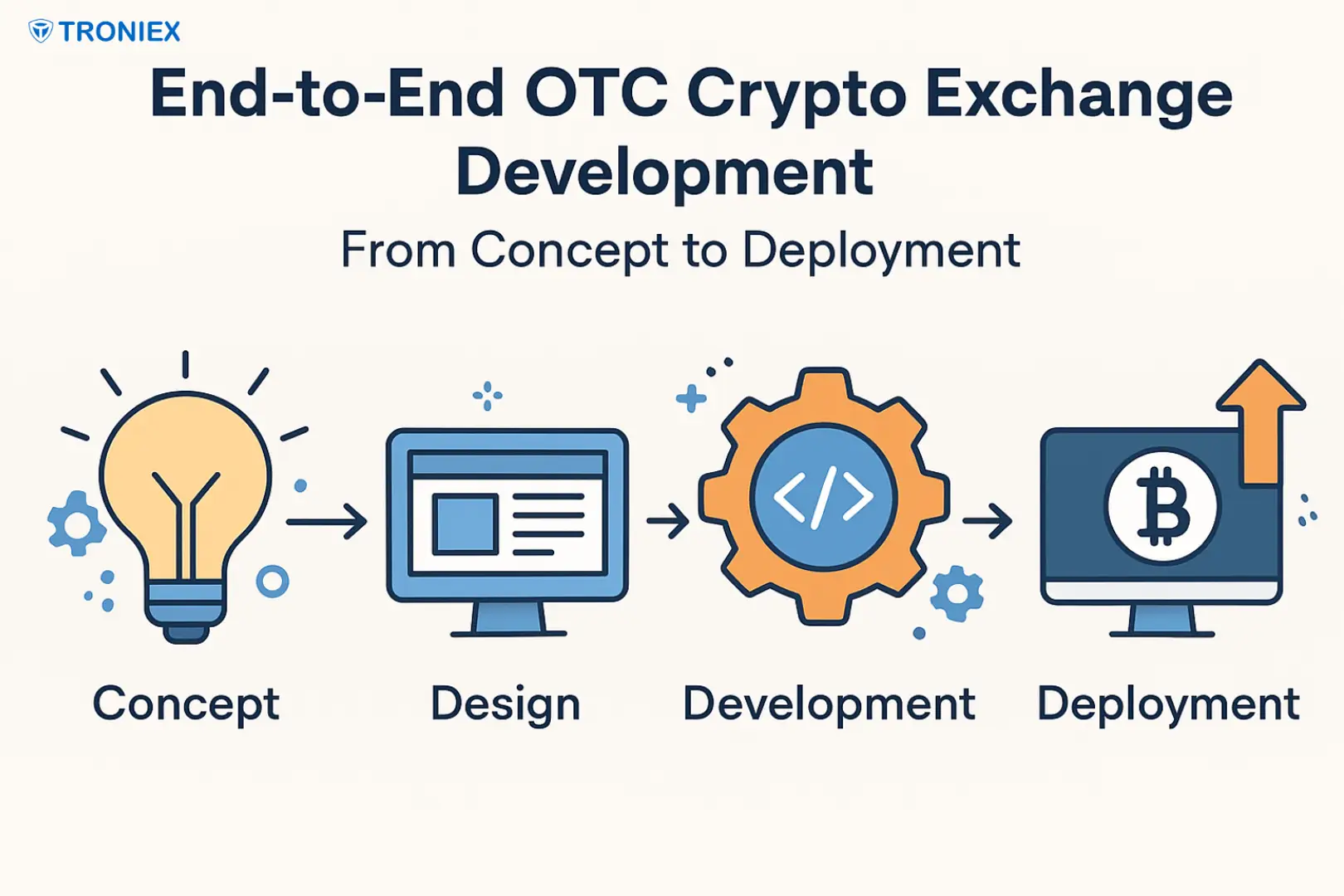

End-to-End OTC Crypto Exchange Development: From Concept to Deployment
The cryptocurrency market continues to grow exponentially, and with it, the demand for Over-the-Counter (OTC) crypto trading platforms has surged. Unlike traditional exchanges, OTC crypto platforms facilitate direct, high-volume trades between buyers and sellers, providing enhanced liquidity, privacy, and competitive pricing. Developing an end-to-end OTC crypto exchange development involves a meticulous journey, from conceptualization to full deployment.
1.Conceptualization and Market Research
Every successful OTC exchange begins with a clear vision. Understanding the market is crucial: Who are your target users, high-net-worth individuals, institutional investors, or retail traders? What types of cryptocurrencies will your platform support? Conducting comprehensive competitor analysis helps identify gaps in the market and determine your platform’s unique selling points. Regulatory compliance should also be considered early, as different regions have varying licensing and KYC/AML requirements.
2.Platform Architecture and Design
Once the concept is defined, the next step is creating a robust architecture. Security, scalability, and speed are non-negotiable. The platform must include features such as multi-currency support, real-time order matching, price discovery, and secure wallets. A seamless, intuitive user interface is equally important—traders must be able to execute transactions quickly and effortlessly. Designing both a web portal and mobile application ensures broader reach and accessibility.
3.Smart Contract and Payment Integration
OTC trading often involves large sums, making smart contract integration essential for trustless transactions. Smart contracts automate trades, escrow funds, and reduce counterparty risk. Additionally, integrating multiple payment gateways for fiat-to-crypto conversions is critical. Supporting traditional banking transfers, digital wallets, and even stablecoins enhances flexibility and attracts a broader user base.
4.Security Protocols and Compliance
Security is the backbone of any crypto exchange. Implementing advanced encryption, two-factor authentication, cold storage wallets, and regular security audits protects both funds and user data. Compliance with KYC (Know Your Customer) and AML (Anti-Money Laundering) regulations not only ensures legality but also builds credibility and trust among institutional clients.
5.Development and Testing
Developing an OTC platform requires skilled blockchain developers familiar with backend and frontend technologies. Agile development methods allow iterative progress and faster deployment. Thorough testing, unit testing, integration testing, and penetration testing, ensure the platform performs flawlessly under high-volume transactions and is resilient against cyber threats.
6.Deployment and Post-Launch Support
After rigorous testing, the platform is ready for deployment. Cloud hosting and CDN integration enhance uptime and performance. Post-launch, continuous monitoring, customer support, and periodic updates are essential for maintaining security, adding new features, and ensuring user satisfaction.
Conclusion
End-to-end OTC crypto exchange development is a complex but rewarding process. By strategically progressing from conceptualization, through design, smart contract integration, security, and testing, to deployment, businesses can launch platforms that meet high-volume trading demands safely and efficiently. As cryptocurrency adoption grows, a well-executed OTC exchange can become a pivotal hub for institutional and high-net-worth traders, driving both liquidity and credibility in the crypto ecosystem.
Related Posts
© 2025 Invastor. All Rights Reserved

User Comments